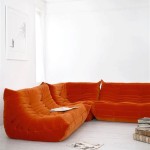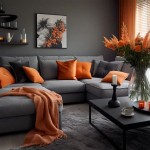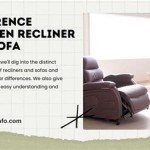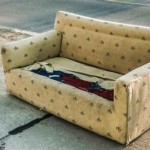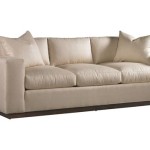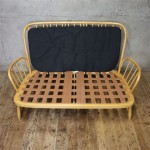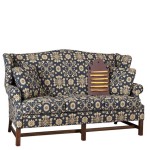The Enduring Appeal of the 4-Seater Leather Sofa with Chaise
The 4-seater leather sofa with chaise represents a significant investment in home comfort and aesthetic appeal. This furniture piece seamlessly blends functionality, luxury, and style, making it a popular choice for living rooms, family rooms, and even spacious home offices. Its size comfortably accommodates families and groups, while the chaise lounge provides a relaxing space for individual use. The leather upholstery offers durability, elegance, and a timeless quality that enhances the overall ambiance of any living space.
The configuration of a 4-seater sofa with a chaise allows for flexible room arrangement. The chaise can be positioned on either the left or right side of the sofa, adapting to different room layouts and personal preferences. This adaptability is particularly valuable in modern homes where space optimization is paramount. Furthermore, the modular design of some 4-seater leather sofas allows the chaise to be detached and reconfigured, offering even greater flexibility.
When considering the purchase of a 4-seater leather sofa with chaise, several factors warrant careful consideration. These include the type of leather, the frame construction, the seating comfort, and the overall style. Neglecting any of these elements can lead to dissatisfaction with the purchase in the long run.
Understanding Leather Types and Grades
Leather, as a natural material, exhibits variations in quality and durability. The type of leather used in a sofa significantly impacts its lifespan, appearance, and maintenance requirements. The most common types of leather used in sofa upholstery include full-grain, top-grain, split-grain, and bonded leather. Each type offers a distinct set of characteristics that affect the overall value and performance of the sofa.
Full-grain leather is considered the highest quality. It is sourced from the top layer of the hide and retains all the natural grain. This gives it exceptional durability and a unique character that develops over time. Full-grain leather sofas are known for their ability to withstand wear and tear, and they age gracefully, developing a rich patina. However, full-grain leather is also the most expensive option.
Top-grain leather, the second highest quality, is also sourced from the top layer of the hide, but it undergoes a sanding or buffing process to remove imperfections. This process makes the leather more uniform and easier to work with. Top-grain leather is still durable and offers a good balance between quality and cost. Many high-end leather sofas are upholstered in top-grain leather.
Split-grain leather is taken from the lower layers of the hide. It is less durable than full-grain and top-grain leather and is often used in less visible areas of the sofa. Split-grain leather is typically embossed or treated to resemble top-grain leather. It is a more affordable option but lacks the longevity and aesthetic appeal of higher-grade leathers.
Bonded leather, the lowest quality option, is made from shredded leather scraps bonded together with polyurethane or latex. It has a uniform appearance but is not as durable or breathable as genuine leather. Bonded leather is the least expensive option and is often used in budget-friendly furniture.
Beyond the type of leather, the grade also plays a significant role. Leather grades are typically categorized based on factors such as the presence of imperfections, the thickness of the hide, and the tanning process. Higher grades of leather exhibit fewer imperfections, greater thickness, and a more consistent color. Investigating the leather type and grade is crucial to ensure the sofa meets specific quality and durability expectations.
The Importance of Frame Construction and Support Systems
The frame of a 4-seater leather sofa with chaise provides the structural foundation that supports the weight of the upholstery and occupants. The quality of the frame construction directly impacts the sofa's stability, durability, and longevity. A well-constructed frame will prevent sagging, warping, and creaking over time.
Hardwood frames, such as those made from kiln-dried hardwood, are the most durable and resistant to warping. Kiln-drying removes moisture from the wood, preventing it from shrinking or expanding over time. Hardwood frames are typically joined using mortise-and-tenon joints or corner blocks, which provide superior strength and stability. Opting for a sofa with a hardwood frame is a worthwhile investment, especially for a piece expected to withstand frequent use.
Softwood frames, such as those made from pine, are a more affordable option but are not as durable as hardwood frames. Softwood frames are more susceptible to warping and cracking over time. They may be suitable for sofas that will not experience heavy use. When considering a softwood frame, inquire about the joining methods used to ensure adequate stability.
Beyond the frame, the support system beneath the cushions is equally important. The support system provides cushioning and prevents the cushions from sagging. Common support systems include sinuous springs, eight-way hand-tied springs, and webbing. Each system offers a different level of comfort and support.
Sinuous springs, also known as no-sag springs, are pre-assembled metal coils that run from the front to the back of the sofa. They are a relatively affordable and durable option, providing adequate support for most users. Sinuous springs are commonly found in mid-range sofas. While suitable for average use, they may not offer the same level of comfort and longevity as more advanced systems.
Eight-way hand-tied springs are considered the gold standard in sofa support systems. Individual coil springs are tied together by hand, creating a network of interconnected support. This system provides superior comfort and support, contouring to the body's shape. Eight-way hand-tied springs are typically found in high-end sofas and are known for their exceptional durability.
Webbing, made from interwoven fabric straps, is a lightweight and flexible support system. It is often used in modern and minimalist sofa designs. Webbing provides adequate support for lighter users but may not be suitable for heavier individuals or those seeking firm support. The durability of webbing depends on the quality of the materials used.
Assessing Comfort and Ergonomics
The comfort of a 4-seater leather sofa with chaise is paramount. Factors such as cushion fill, seat depth, and backrest height all contribute to the overall seating experience. Paying attention to these details will ensure the sofa provides adequate support and relaxation.
Cushion fill materials include down, feathers, foam, and fiber. Each material offers a different level of softness, support, and resilience. Down and feather fills provide a luxurious and plush feel, but they require regular fluffing to maintain their shape. Foam fills offer more support and require less maintenance. High-density foam is more durable and resistant to sagging than low-density foam. Fiber fills offer a balance between softness and support and are often used in combination with foam.
The ideal seat depth depends on personal preference and body size. A deeper seat is more comfortable for lounging and relaxing, while a shallower seat is more suitable for upright sitting. Considering the intended use of the sofa will help determine the appropriate seat depth. Taller individuals may prefer a deeper seat to accommodate their legs, while shorter individuals may prefer a shallower seat for better back support.
Backrest height also plays a crucial role in comfort. A higher backrest provides more support for the neck and shoulders, while a lower backrest offers a more minimalist look. A sofa with adjustable headrests can provide customized support for different users. Ergonomic considerations, such as lumbar support, are essential for maintaining proper posture and preventing back pain.
In addition to these factors, the overall design of the chaise lounge contributes to comfort. The angle of the chaise should be comfortable for reclining, and the length should be sufficient to support the legs fully. A well-designed chaise lounge will provide a relaxing and supportive space for reading, napping, or watching television.
By carefully considering the leather type, frame construction, support system, and comfort features, individuals can choose a 4-seater leather sofa with chaise that meets their specific needs and preferences. This furniture piece, when selected thoughtfully, can provide years of comfort, style, and enjoyment.
Kingly 4 Seater With Chaise Corner Sofas Darlings Of Chelsea

Shayne 4 Seater Leather Sofa With Chaise Temple Webster

Living Room Sofa Recliner Cow Genuine Leather Cinema 4 Seater Coffee Table Chais Sectional With

Maximus 4 Seater Corner Sofa With Left Or Right Hand Facing Chaise Bespoke Oak Furniture

Oliver Leather 4 Seater With Chaise Customisable Sofa At Desired Living

4 Seat Recliner Sofa Electric Cinema Leather

Lucio 4 Seater Left Chaise Sofa Saddle Brown Leather Cassa Vida

Queens 4 Seater Leather Sofa With Chaise Longue Innoconcept

Harvey 4 Seater Leather Corner Sofa In Honey Vintage

Leonardo 4 Seater Sofa Sectional Leather By Marinelli Home

